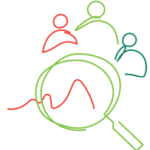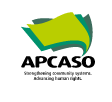MODELS
A community treatment observatory (CTO) is a mechanism that systematically and routinely collects and analyzes qualitative and quantitative data. This data is used for monitoring trends along the HIV care cascade, and to inform targeted action that will improve the quality of HIV services.
In a CTO, an organized group of community members—such as a network of people living with HIV—collect data on various aspects of HIV prevention, testing, care, and treatment services. This can include, for example, indicators on the number of HIV tests conducted in a specified area, or the frequency and duration of ARV stock-outs experienced in a certain time period.
CTOs are a systematic and continuous monitoring process. Data is collected at set intervals (e.g. monthly), and entered into a centralized database.
Structure of a CTO The basic structure of a community treatment observatory includes five basic components:
1. Implementing Network.
2. Focal point person.
3. Data collection sites.
4. Data collectors.
5. Data supervisor.
6. Community consultative group (CCG).
7. Academic institution.
SOFTWARE SOLUTIONS
“OneImpact is a digital platform made up of three tools that work together to provide a comprehensive community engagement, community empowerment and community-led monitoring solution.
Downloadable mobile application for people affected by TB: It provides people affected by TB with information on TB, their rights, and TB care and support services. It also provides spaces for people affected by TB to connect virtually and to report challenges for a rapid response and resolution.
First Responder Dashboard: It allows first responders to track, coordinate, and mobilize a response to the challenges reported.
Accountability Dashboard: A platform for community advocates and other stakeholders to monitor and analyse trends on TB challenges and to generate CLM reports for advocacy, action, and programmatic change.
OneImpact TB CLM is currently operational in 26 countries.
TOOL DESIGNED TO HELP YOU CHOOSE THE RIGHT TOOL FOR YOU
On this page, you will be able to choose the best tool for your community group, which contains the appropriate collection method for this CLM, according to your questions and advocacy goal. Also, this web tool will help you assess whether the tool you have chosen matches the time, financial and human resources that your group currently has.



